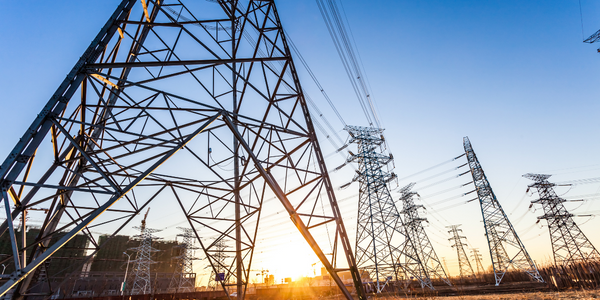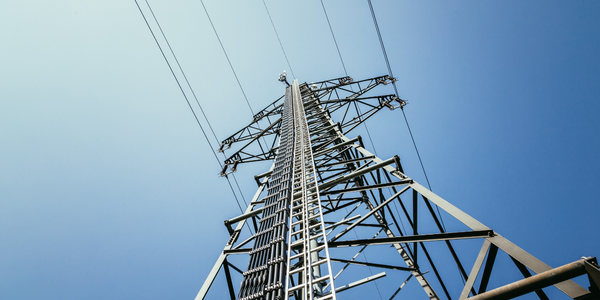下载PDF
Making a connected world more efficient
技术
- 基础设施即服务 (IaaS) - 云计算
- 基础设施即服务 (IaaS) - 云存储服务
适用功能
- 离散制造
用例
- 能源管理系统
- 基础设施检查
服务
- 云规划/设计/实施服务
- 系统集成
挑战
DigiPlex, a leading data center operator in the Nordics, is dedicated to responsible, sustainable growth. However, the power-intensive nature of data centers presents a formidable challenge for the company. As society grows more connected every day, data centers are sources of enormous power consumption. This presents a formidable challenge for colocation providers like DigiPlex in Norway, which seeks to grow in a competitive business environment while being a responsible corporate citizen. DigiPlex views operating green data centers as crucial to business growth and survival. The company believes that in the future, if a data center is not operated in a completely renewable, sustainable manner, it won't survive in the industry.
关于客户
DigiPlex is a leading data center operator in the Nordics. The company is dedicated to responsible, sustainable growth in a power-intensive industry. DigiPlex operates the Ulven colocation facility in Oslo, Norway, which is the country's most connected site with hundreds of customers. The facility has over 10 megawatts capacity and 5,000 square meters of white space. It serves high-profile customers and is powered by 100% renewable energy sources. DigiPlex is committed to pushing the boundaries of innovation when it comes to operating better data centers. The company realizes the importance of this goal — for sustainability concerns as well as motivations for business growth.
解决方案
DigiPlex turned to Schneider Electric to meet its crucial challenge of operating green data centers. Schneider provides the connected products and expertise for DigiPlex to maximize efficiency at its Oslo Ulven data center. Energy efficiency improved by 4%, reducing the data center’s overall OpEx. Connected products like Galaxy™ VX UPS, Uniflair™ chillers, and Masterpact™ MTZ breakers maximize efficiency, helping DigiPlex achieve its ambitious vision. The Galaxy VX UPS features long-lasting lithium-ion batteries that result in less waste than traditional lead-acid batteries that need to be replaced more frequently, and also have a smaller footprint. This space-saving feature enabled DigiPlex to renovate an existing facility instead of absorbing the cost of building a new, larger one.
运营影响
数量效益
相关案例.

Case Study
Driving Network Efficiency and Fraud Detection Efforts
Baltimore Gas and Electric Company (BGE) wanted to optimize the deployment and ongoing health of its advanced metering infrastructure (AMI) network and identify and reduce unbilled energy usage. BGE wanted a solution to deliver an annual economic benefit of $20 million.

Case Study
IoT based Energy Quality Availability Monitoring Solution
There were several challenges faced:Since this data would be in the public domain, accuracy and authenticity of this data were of paramount importance. It should be able to withstand scrutiny.It is challenging to build an appliance that can withstand a wide range of voltage fluctuations from as low at 90v to as high as 320v. Since the device would be installed in remote locations, its resilience was of paramount importance.The device would have to deal with poor network coverage and have the ability to store and re-transmit data if networks were not available, which is often the case in rural India. The device could store up to 30 days of data.The platform that deals with the data should be readily available and highly reliable and never lose a packet of data.
-Systems.png)
Case Study
Product Development for Power Line Communication (PLC/BPL) Systems
The client wanted to develop a product that can acquire data from their meter units installed at the consumer's premises. A system capable of acquiring, transferring and archiving the data had to be in place, replacing the existing traditional method which was error prone and expensive to operate. The system needed to be integrated with the existing Customer Relationship Management (CRM) system for increasing the operational efficiency.

Case Study
Citywide Smart Grid Solutions in Lyon
Standardize and showcase a fully operational smart grid for widespread deployment of proven innovative solutions and provide the basis for:• New business models for prosumer• Investment strategies for the French power system to incorporate the latest technological innovations• Transition scenarios to facilitate the evolution of the current network towards a smart grid system• Implementation of findings from multidisciplinary research on optimal technological and economic choices

Case Study
New Sun Road Connects Uganda to Clean and Reliable Energy
New Sun Road is a registered California Benefit Corporation committed to implementing solutions to climate change and global energy poverty. This group of talented engineers is partnering with Ugandan green energy startup GRS Commodities to deliver reliable and clean power to the Ssese Islands in Lake Victoria, Uganda. The goal of the pilot system is to provide affordable and reliable solar powered electricity to businesses on Kitobo Island.Although no small feat, deploying the solar power grids is likely the simplest part of the solution. Solar was the obvious choice for the power source because it is economical and relatively simple to deploy.The primary difficulty lies in managing the energy grid and ensuring proper maintenance without having to be on-site at every location. The capability to remotely monitor the grid will enable New Sun Road to expand their service across the Ssese Islands in a more efficient manner since each grid can be monitored from one central location. But, in remote areas, where communication options are limited, how do you remotely monitor and manage a smart solar power grid?Without a local ISP, this can be a complex challenge, so the team decided to enable remote connectivity over the global cellular network.In addition to communication challenges, another major difficulty New Sun Road had to overcome was finding a device capable of withstanding the high temperatures within their network hubs. The device would be residing within a NEMA enclosure in direct sunlight, so the capability to function under extremely high temperatures was a must.






